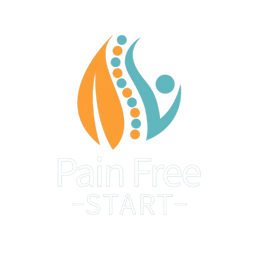Introduction
Ever heard of rucking? This fitness trend is rapidly gaining popularity for its simplicity, effectiveness, and accessibility. Whether you’re looking to build strength, burn calories, or just enjoy the great outdoors, rucking might be the perfect workout for you. In this blog, we’ll break down what rucking is, its health benefits, and how to get started.
What is Rucking?
Rucking is a form of weighted walking that originates from military training. It involves carrying a weighted backpack (also known as a rucksack) while walking or hiking. The added resistance increases the intensity of your walk, engaging multiple muscle groups while keeping the workout low-impact.
Rucking is ideal for people of all fitness levels because you can adjust the weight to suit your ability. It’s also incredibly versatile—you can do it in your neighbourhood, at the park, or on hiking trails.
Top Benefits of Rucking
Burn More Calories Than Walking
Adding weight to your walk increases your calorie burn compared to regular walking. If you’re looking for a way to lose weight efficiently while keeping the impact on your joints low, rucking is a fantastic option.
Build Full-Body Strength
Rucking engages your legs, core, back, and shoulders, helping to improve posture, stability, and muscular endurance. If you’re keen to improve your strength and gain more confidence in your body, check out my Pain Free Body Program which is designed for just that.
Low-Impact & Joint-Friendly
Unlike running, rucking is gentle on the joints, making it suitable for people recovering from injuries or those looking for a sustainable long-term fitness routine.
Improves Cardiovascular & Mental Health
Rucking boosts heart health, endurance, and stamina, while also being a great way to relieve stress and improve mental well-being. Getting outside and moving regularly has been linked to lower stress levels and improved mood.
Easy & Cost-Effective
No expensive gym memberships or fancy equipment needed! All you need is a sturdy backpack and some weight—this could be books, water bottles, or actual weight plates.

How to Start Rucking (Beginner’s Guide)
Step 1: Choose the Right Backpack
Look for a durable backpack with padded shoulder straps and a hip belt for extra comfort. If you plan to ruck often, investing in a specialised rucksack can make a big difference.
Step 2: Pick the Right Weight
Beginners should start with 5–10 kg (10–20 lbs) and gradually increase as their endurance builds. The goal is to challenge yourself without overloading your body.
Step 3: Focus on Proper Form
- Keep your back straight and shoulders back
- Walk with a steady pace and engage your core
- Take shorter steps to maintain stability
- Start with shorter distances and slowly progress
TOP TIP – Improve your posture with my FREE Posture Masterclass. Click to learn more and enrol.
Step 4: Wear Proper Footwear
Since rucking involves long-distance walking with added weight, invest in supportive, cushioned shoes or hiking boots to protect your feet and joints. See this blog on Common Rucking Injuries and How to Prevent Them to learn how to prevent pain and discomfort.
Common Mistakes to Avoid When Rucking
Overloading Too Soon – Start light and gradually increase weight to avoid injury.
Bad Posture – Avoid slouching; keep your shoulders pulled back and core engaged.
Ignoring Warm-Ups – Stretch your legs, back, and shoulders before and after rucking to prevent stiffness and soreness.
Wearing the Wrong Shoes – Inadequate footwear can lead to foot pain and blisters.
Conclusion
Rucking is more than just a workout—it’s an accessible, fun, and effective way to stay active, improve strength, and burn calories. Whether you’re a fitness enthusiast looking for a new challenge or a beginner wanting a low-impact exercise, rucking is a fantastic option.
Start light, focus on proper form, and gradually increase your weight and distance. If you’re serious about building strength and confidence in your body, take a look at my Pain Free Body Program for expert guidance. Happy rucking.
Take care, Helen
Helen Manders BSc (Hons) MCSP HCPC
Chartered Physiotherapist Since 2001
P.S. If pain or injury are stopping your rucking plans then click to see how I can help you.



